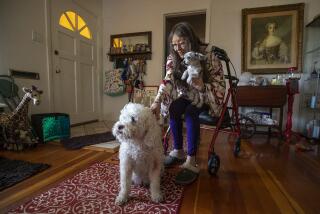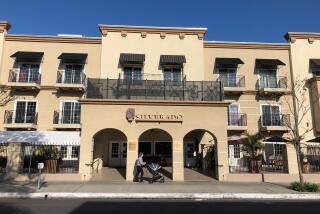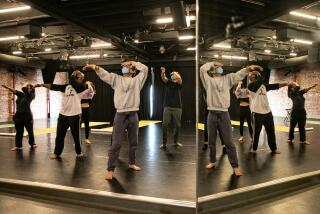Column: Sick of COVID isolation? Let Holocaust survivor Joe Goldfarb show you how it’s done
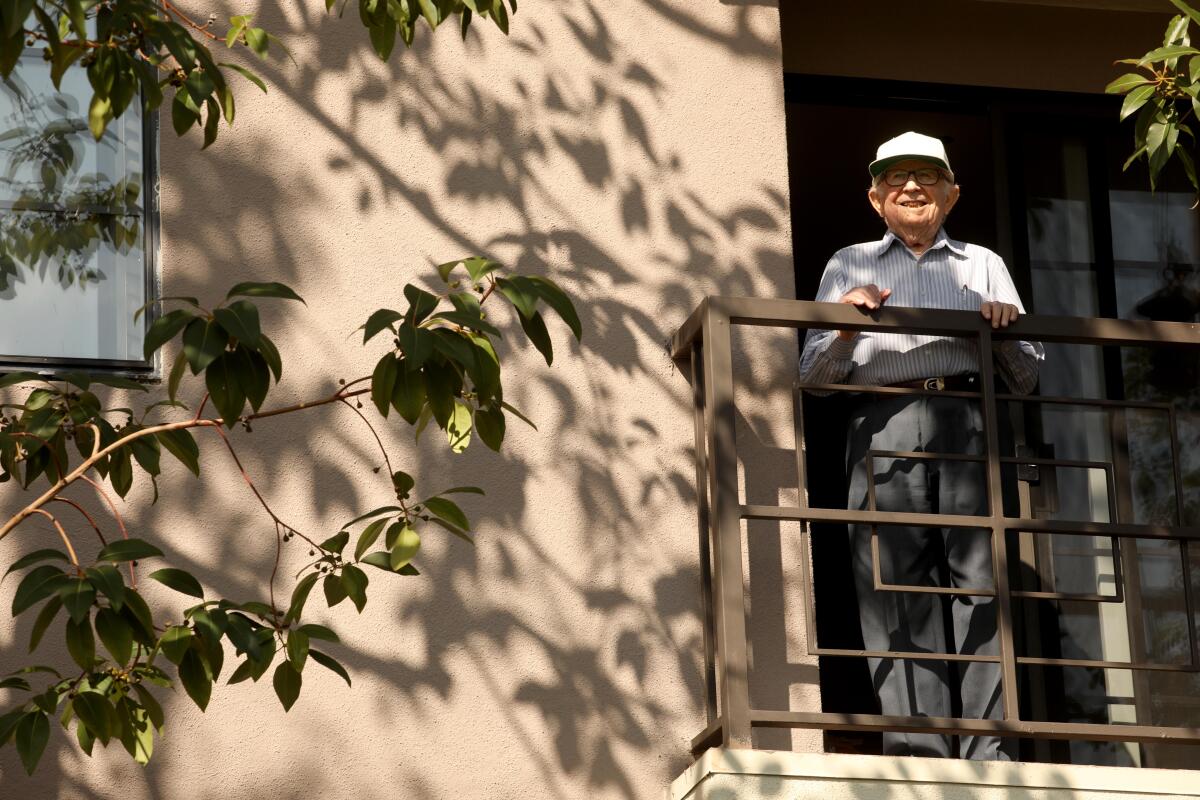
- Share via
Alma Balter, 103, has done a lot of reading in her two-room unit.
Martha Sternbach, 94, loves embroidery and has spent hours at her craft.
Joe Goldfarb, coming up fast on his 104th birthday, has logged a lot of miles on the stationary bike in his room.
The lockdown at Palm Court Retirement Living in Culver City began in December after a COVID-19 breakout, and the residents — some of whom are Holocaust survivors — had to find ways to cope with their isolation.
Rita Hausman, 90, fell even more deeply in love with the music she loves.
“I found out there’s a button on my TV that plays classic country-western 24/7,” said Hausman, who sounded so chipper, you’d never know she has been trapped in her room for nearly two months.
“Conway Twitty, I love him. And all those stories by Johnny Cash, like ‘A Boy Named Sue.’ I love the narratives, and I dance all around my apartment,” Hausman told me. “You ain’t livin’ if you ain’t lovin.’”
To be honest, this is not the story I expected to tell when I first heard about the isolation imposed at Palm Court — and a lot of other senior facilities. Toni Balter, Alma’s daughter, had told me it’s been difficult for the residents to be cut off from friends, activities and communal dining.
That’s definitely true, and on top of that it’s been frustrating, as well as a little scary, for these seniors to discover that, despite calls for everyone 65 and older to get vaccinated, it’s a lot easier to win at bingo than to figure out how to make a vaccination appointment and get to where you need to go.
No doubt, these have been tough times for the Palm Court residents and a lot of other seniors in residential settings.
What sticks with me, though, is the spunk of these people.
Hausman said she was laid low by COVID-19. Her head hurt. Her face hurt. But after three weeks of feeling as if she’d fallen into that burning ring of fire, she got back up and danced around the room to it again.
“When you’re through it,” Hausman said, “you feel fantastic.”
Sternbach, a Holocaust survivor, told me she was grateful for “the miracle” of modern technology, because she may be stuck in her room, but she can pull out a digital device that allows her to see and talk to her family.
Balter complained that my interview was taking longer than she had time for. But before she shooed me off the phone, she told me the virus “doesn’t scare me, because I’m not afraid to die.” But that’s not to say she doesn’t miss having dinner with her pal Rita, the country music aficionado.
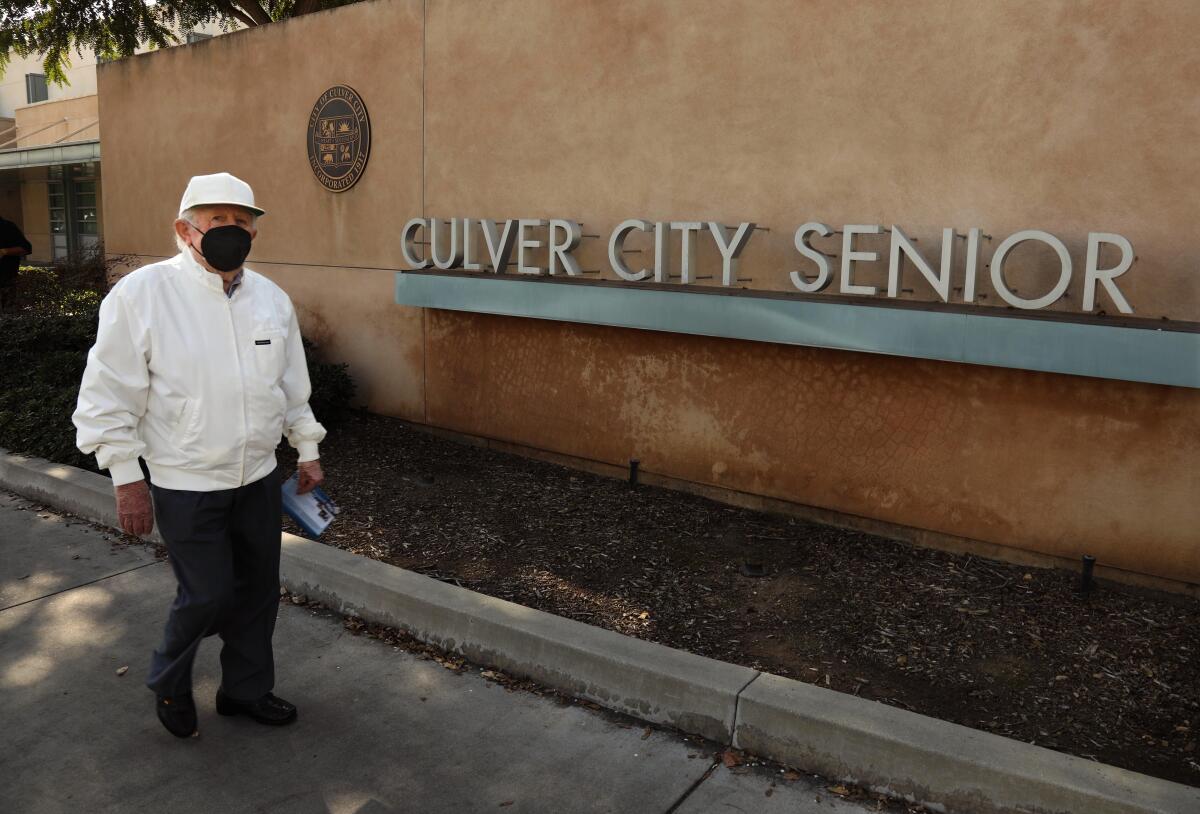
For Goldfarb, also a Holocaust survivor, the stationary bike wasn’t enough of a cardio challenge. So he began plotting to bust out and go for daily walks.
“I wasn’t encouraging him,” said his son Jack, a retired attorney. “But he doesn’t always listen to what I tell him.”
Jack was concerned about his dad wandering the halls and taking the elevator down to the lobby at a facility where everything was fine until December, when staff and residents began getting COVID-19.
“Joe Goldfarb has a mind of his own,” said Kirsten Berquist, executive director of Palm Court. “He could probably run laps around even me.”
Berquist said that after Palm Court was placed under official quarantine, residents were required to stay in their apartments if they were in the building. Since then, meals have been served to residents in their rooms, and all regular activities have been suspended. Berquist said a number of employees and 14 residents tested positive. Two of the residents died, and a third died after contracting COVID-19 while in the hospital.
At the moment, Berquist said, all the staff members are recovered and back on the job, and there have been no new cases recently.
“We’re not a prison, so I can’t force people to stay inside if they want to go for a walk around the block. I would hope they follow all the necessary protocols, like wearing a mask,” Berquist said.
On Thursday at 11 a.m., a masked, blue-eyed Goldfarb emerged from the Palm Court lobby in fine form, with creased trousers and a white jacket and cap. He’d just finished his stationary bike workout and was ready for a stroll, south on Overland Avenue near the Sony lot, then down past the Culver City Senior Center.

Goldfarb did pause to show me some photos first, including one of him in uniform. He was in the Polish Army at the time, he said. The year was 1939. Just before the concentration camps, the many brushes with death, the loss of both parents and all but one of his five siblings.
“It came up in conversation,” Jack said of his father’s past and how it might influence his determination to stay strong during the pandemic. “I told him I know this doesn’t compare to what he experienced, but I asked him what it’s been like. He said, ‘It’s been difficult. But compared to what I went through, it’s a breeze.’”
Goldfarb, whose many jobs after coming to the United States included chicken farmer and grocery store owner, moves at a good clip for a man born in 1917 — a year before the Spanish flu ravaged the world. No cane, no walker, no complaints. He’d had a kink in his back of late, but it was gone, and that brought a smile. He pointed up to his Palm Court unit, where he was able to stand on the balcony and chat with children, grandchildren and one great-grandchild, even during the quarantine.
“It’s the one with the bird feeder,” he said, pointing to his balcony. “The birds tell me to keep living, because I’m the only one who feeds them.”
Goldfarb is one of more than a dozen Palm Court residents who have managed to get at least their first dose of COVID-19 vaccine, thanks to help from family or transportation services provided by management. But it made me wonder. Would it really be so difficult to have mobile medical teams inoculate seniors where they live, given the many factors that put them at high risk?
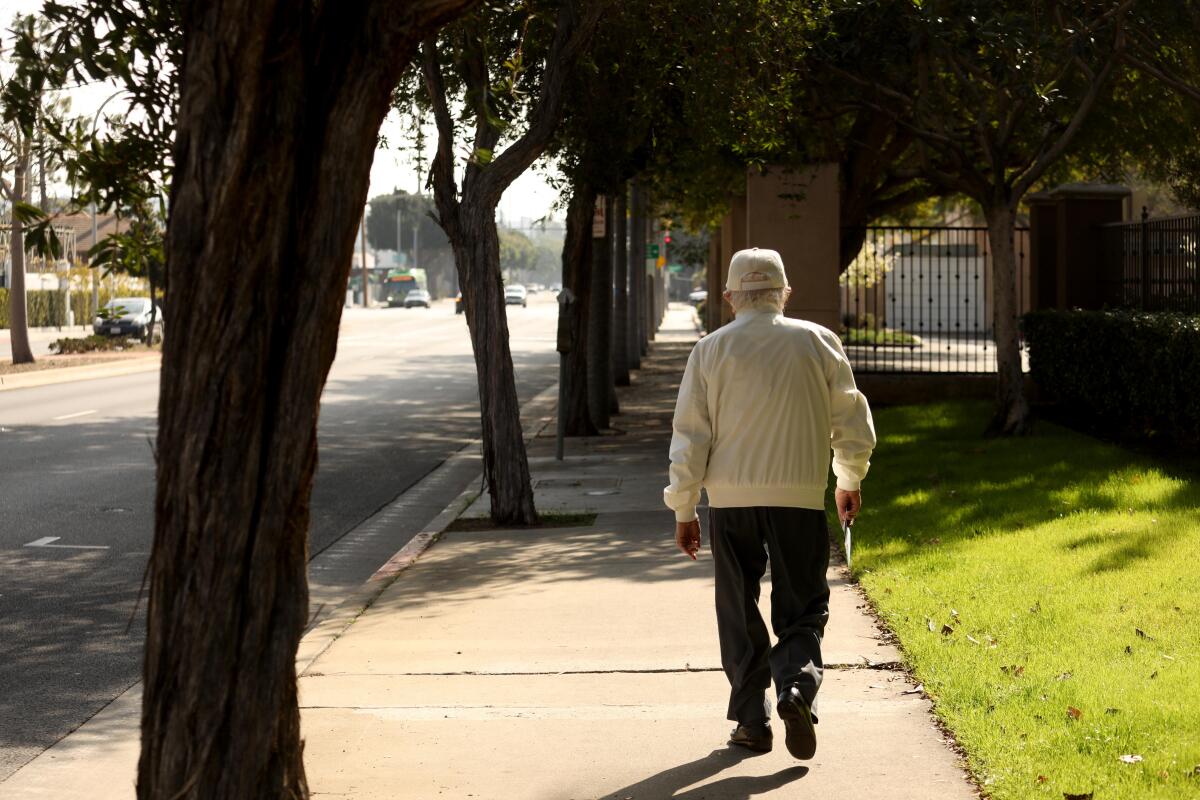
I know vaccines are in short supply, and jostling groups are making legitimate claims for priority, and we’ve never had a vaccination campaign on such a scale with such urgency, but still. Berquist told me she has made dozens of calls to healthcare providers, pharmacies and public health officials, trying to speed things up, so far to no avail.
Palm Court residents did get one bit of good news. They were notified midweek that the quarantine rules are being relaxed to make way for a gradual, careful return to normal activities.
Goldfarb, already out of the gates, strode to the corner of Culver Boulevard like it was a tryout for the senior Olympics. He took a short breather before looping back, past trees exploding with early bloom.
“I know tomorrow will be better than today,” he said.
More to Read
Sign up for Essential California
The most important California stories and recommendations in your inbox every morning.
You may occasionally receive promotional content from the Los Angeles Times.

